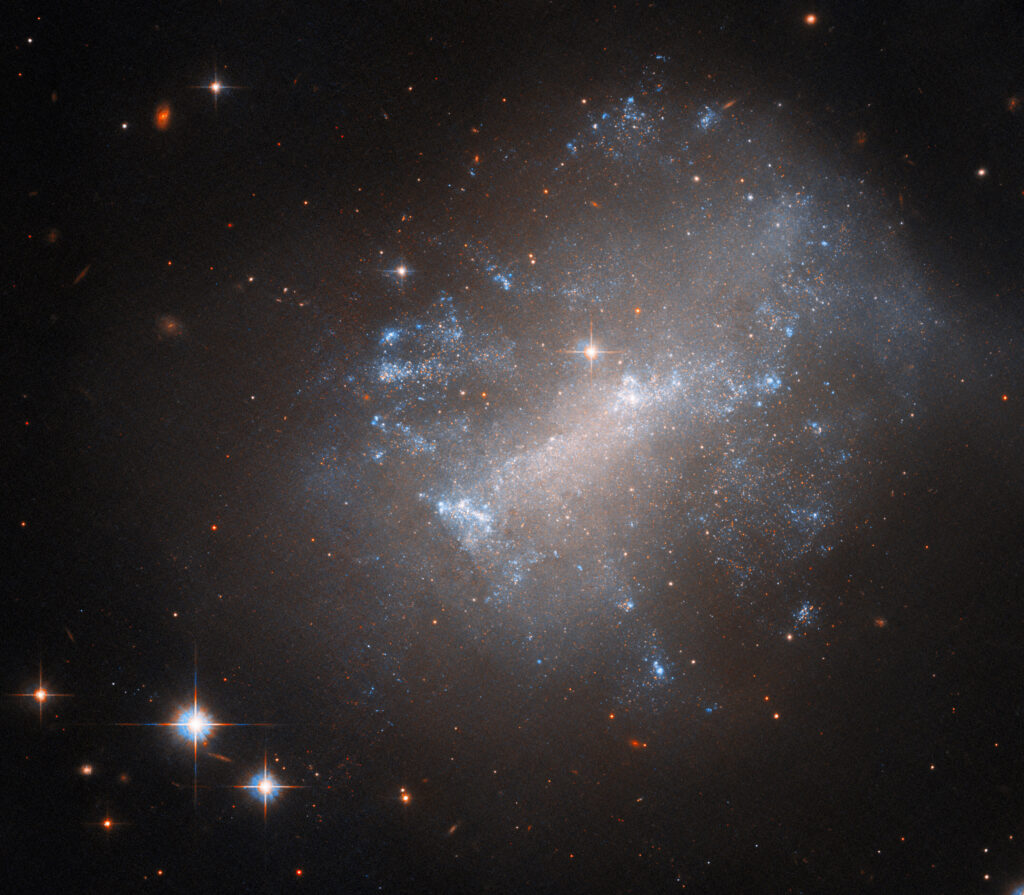The Hubble mission support team has published a new image of the space telescope. It shows the galaxy NGC 7292.

NGC 7292 is located at a distance of about 44 million light-years from Earth in the direction of the constellation Pegasus. Hubble’s photo demonstrates that it has a “disheveled” look. NGC 7292 does not have a characteristic spiral structure, so it is classified as an irregular galaxy. At the same time, it is interesting to note that its core is elongated into a distinct band. The presence of such a structure in the center is a characteristic feature of many spiral galaxies.
Another distinguishing feature of NGC 7292 is its very low surface brightness. The galaxy is surprisingly dim, which indicates that it is dominated not by stars, but by gas and dark matter.
Hubble photographed NGC 7292 during a project to study Type II supernovae. They arise during the collapse of giant stars. Astronomers hope to learn more about such explosions by studying their remnants. NGC 7292 was chosen for the project because a Type II supernova broke out in it in 1964. Astronomers hope that Hubble’s observations will help determine the mass of the deceased star, as well as find out about the presence of companions.
Recall that in May, a Type II supernova broke out in a galaxy close to the Milky Way. It has become the brightest supernova in the Earth’s sky over the past decade.
According to https://esahubble.org
Follow us on Twitter to get the most interesting space news in time
https://twitter.com/ust_magazine

